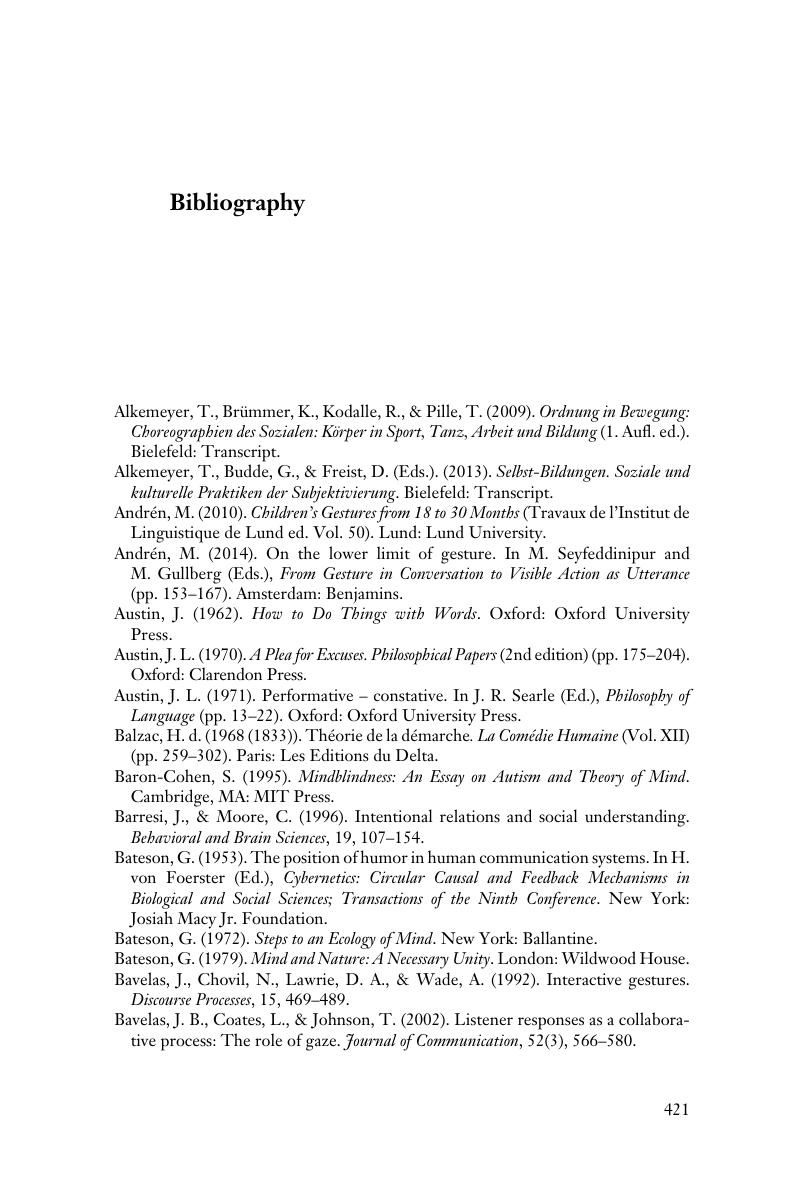Book contents
- Self-Making Man
- Frontispiece
- Learning in Doing: Social, Cognitive, and Computational Perspectives
- Self-Making Man
- Copyright page
- Dedication
- Dedication
- Contents
- Acknowledgments
- About this book and the man it is about
- 1 Moving
- 2 Looking
- 3 Pointing
- 4 Showing
- 5 Making Sense
- 6 Speaking
- 7 Getting Things Done
- 8 Self-Making
- Autopoietic research: a note on methodology
- Appendix: Activity log
- Bibliography
- Author Index
- Subject Index
- Books in the Series (continued from pageiii)
- References
Bibliography
Published online by Cambridge University Press: 22 June 2017
- Self-Making Man
- Frontispiece
- Learning in Doing: Social, Cognitive, and Computational Perspectives
- Self-Making Man
- Copyright page
- Dedication
- Dedication
- Contents
- Acknowledgments
- About this book and the man it is about
- 1 Moving
- 2 Looking
- 3 Pointing
- 4 Showing
- 5 Making Sense
- 6 Speaking
- 7 Getting Things Done
- 8 Self-Making
- Autopoietic research: a note on methodology
- Appendix: Activity log
- Bibliography
- Author Index
- Subject Index
- Books in the Series (continued from pageiii)
- References
Summary

- Type
- Chapter
- Information
- Self-Making ManA Day of Action, Life, and Language, pp. 421 - 436Publisher: Cambridge University PressPrint publication year: 2017



